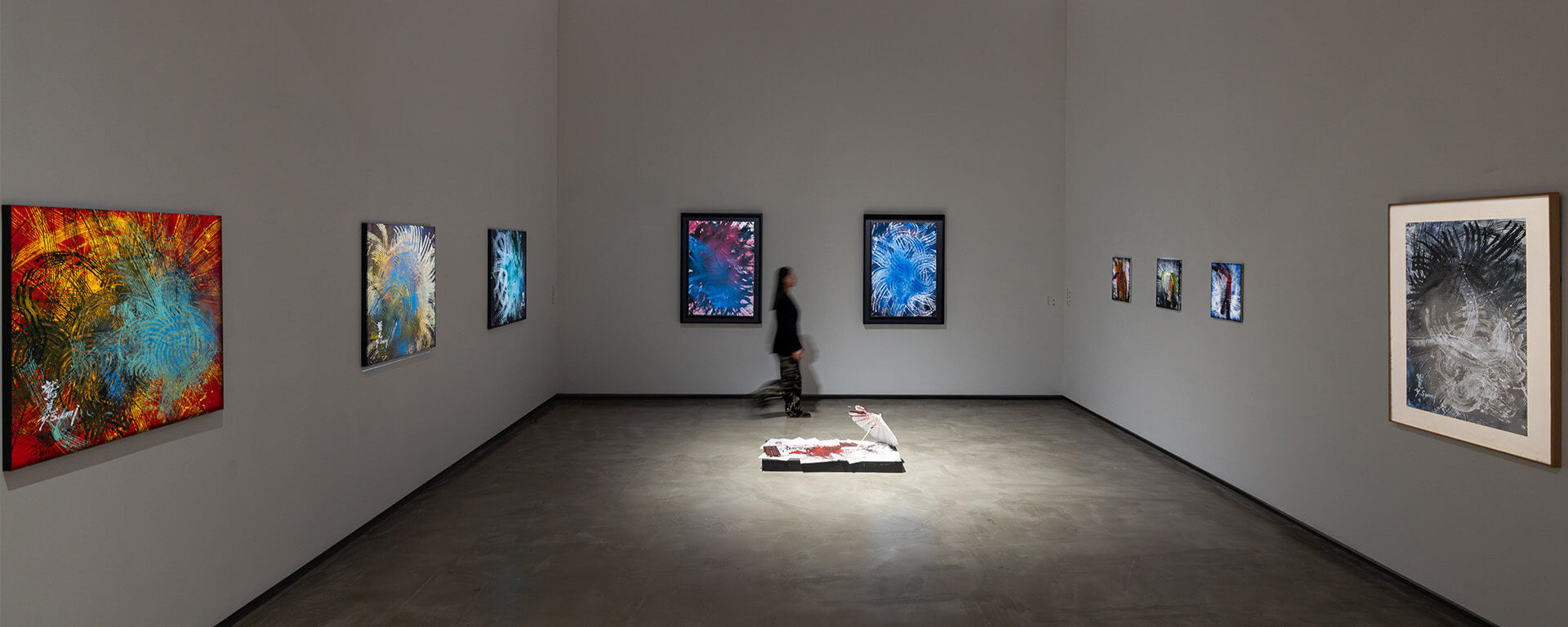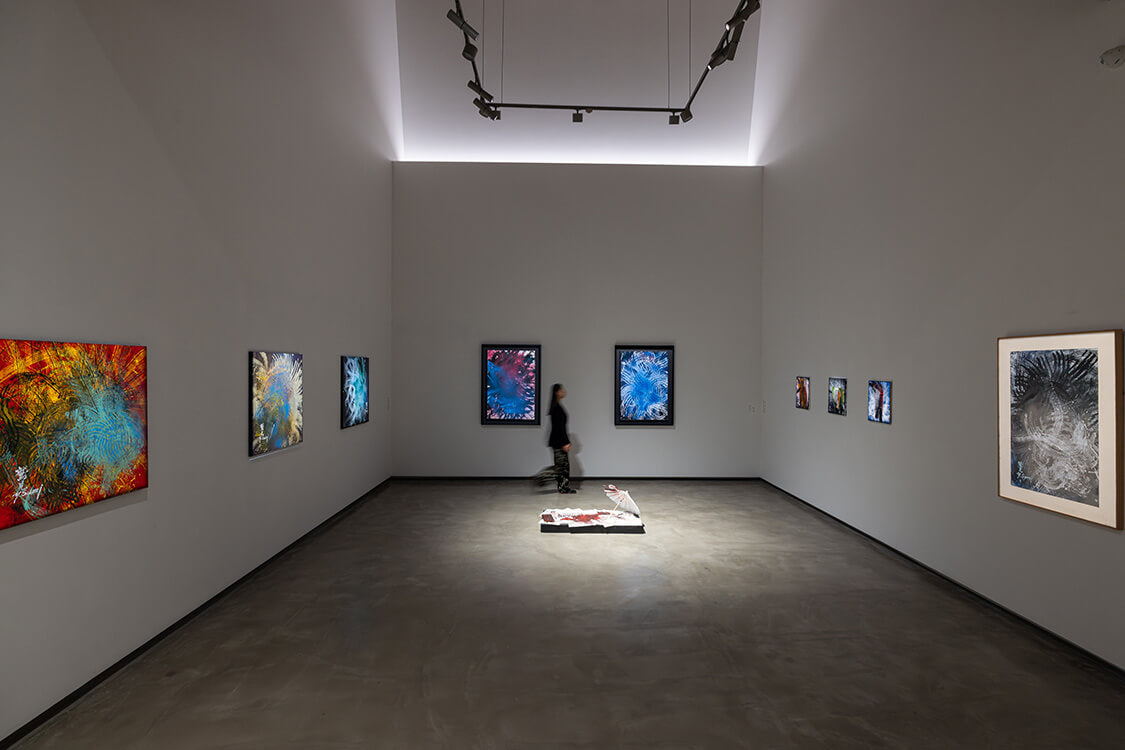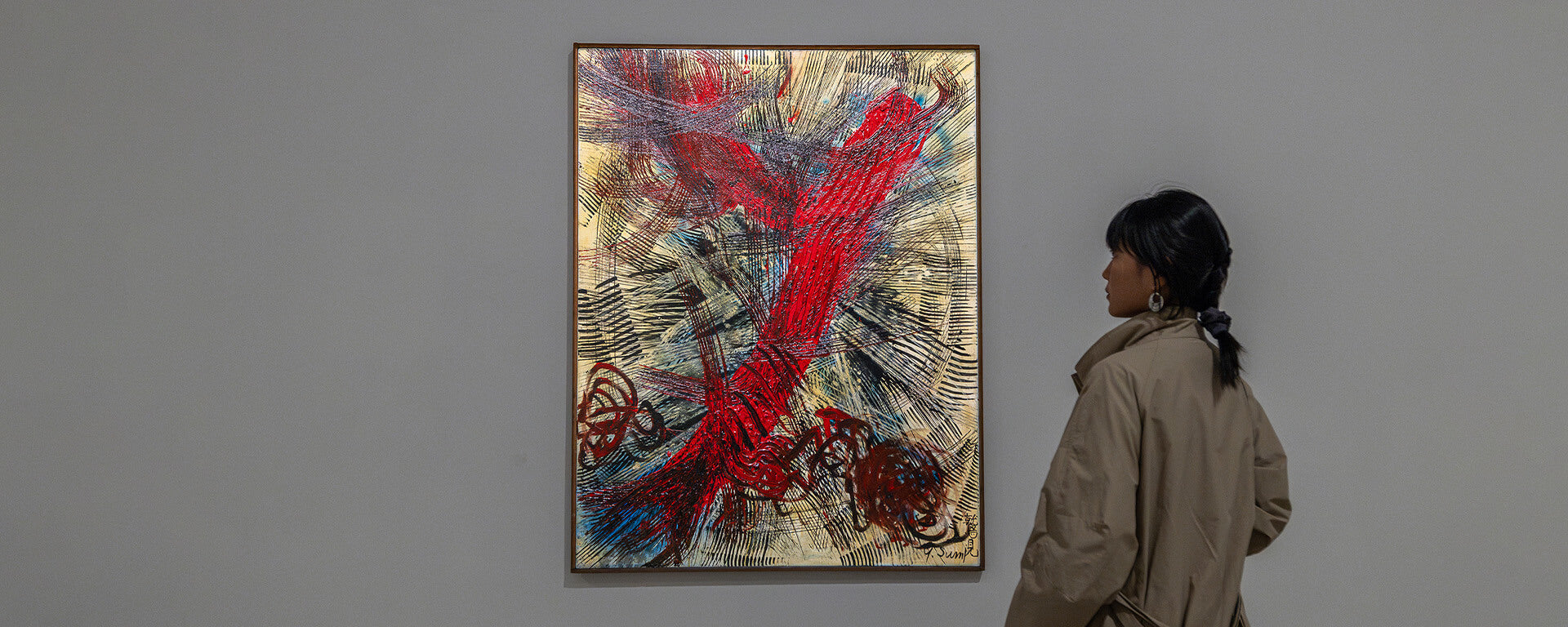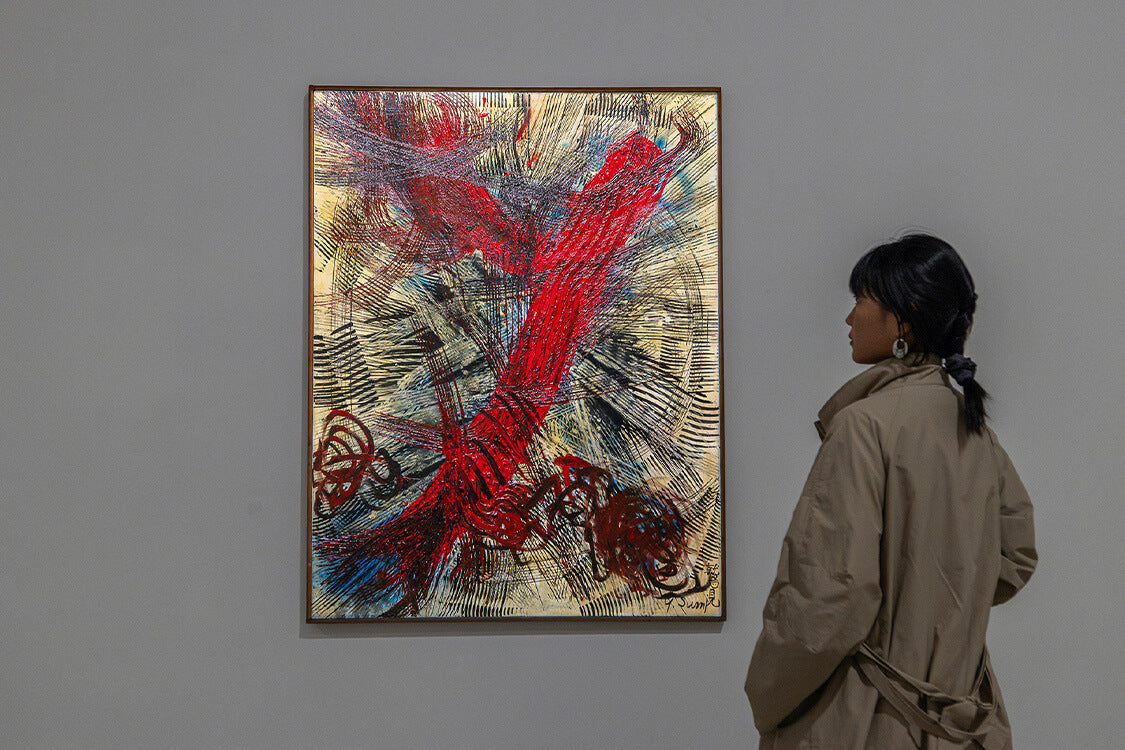From works as early as the 1950s, this exhibition will showcase the various stages and events in Sumi’s career – from his participation in the Gutai Art Association to the discovery of a painting technique using an abacus and the subsequent developments that took his art activities around the world. It becomes evident that Sumi embodied a distinctly free-spirited outlook on life, a quality that resonates profoundly in his canvases.


YASUO SUMI: Harmony in Chaos
Beijing
2025.03.29 - 05.10


Sumi is known for using unconventional tools such as the soraban (Japanese abacus) and a paper bangasa (traditional umbrella). Other times, he would stick paper on top of a mosquito net and paint with a vibrating mechanism. For Sumi, the messier the work is, the closer it is to the unconscious mind. Therefore, Sumi’s work is full of the tension of life in movement, resembling a chaotic universe or rustic landscape.


Art has the power to overturn concepts. Art that doesn’t upset anything is meaningless.


Yasuo Sumi has always explored the boundaries of art with an unrestrained creative attitude, constructing a unique visual language between chaos and order, intuition and reason. We invite you to enter his art world, to experience a visual feast full of tension and free spirit, and to discover the beauty of artistic harmony in chaos.


ABOUT

YASUO SUMI
YASUO SUMI


2025.03.29 - 05.10
BEIJING
Tel: +86 10 59920796
Opening Hours: 11:00 - 18:00
Closed: Sunday, Monday

















